Blog

Troubling Trends in Housing Market -Black Knight
Mortgagernoriginations in January were at the lowest level in 6 years 2008 Black KnightrnFinancial Services said today and data on prepayment speeds and the remainingrnuniverse of “refinancible” mortgages do not bode well for the refinance segmentrnof the market. However, the company’srnJanuary Mortgage Monitor notes thatrnthe home equity market is stirring. Lastrnyear was the first year since 2006 in which origination of those loans andrnlines of credit increased.</p
Originationrnvolume dropped below 400,000 mortgages during the fourth quarter of 2013 forrnthe first time since 2011 and by the end of the year were at the lowest pointrnsince mid-2008 when volume fell to around 300,000. The share of government-backed mortgages hasrnalso declined to 83 percent from a peak of 91 percent in 2009. </p
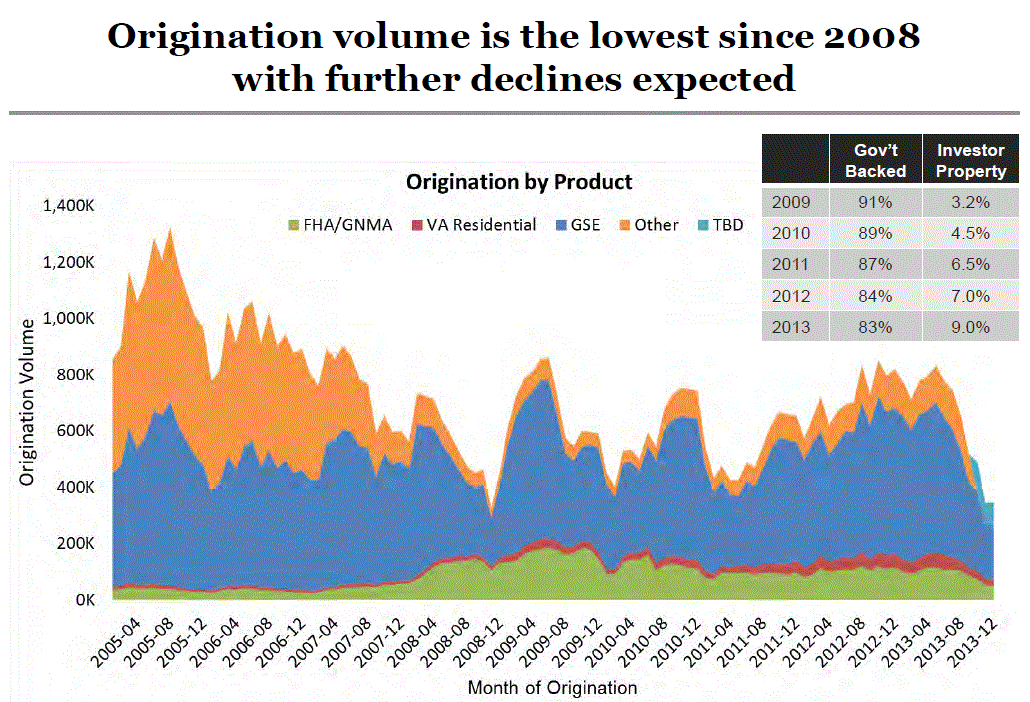 </p
</p
“InrnJanuary, we saw origination volume continue to decline to its lowest pointrnsince 2008, with prepayment speeds pointing to further drops inrnrefinance-related originations,” said Herb Blecher, senior vice presidentrnof Black Knight’s Data & Analytics division. “Overall originationsrnwere down almost 60 percent year-over-year, with HARP volumes (according to thernmost recent FHFA report) down 70 percent over the same period. These declinesrnare largely tied to the increased mortgage interest rate environment, which isrnhaving a significant impact on the number of borrowers with incentive tornrefinance. A high-level view of this refinancible population shows a decline ofrnabout 13 percent just over the last two months.</p
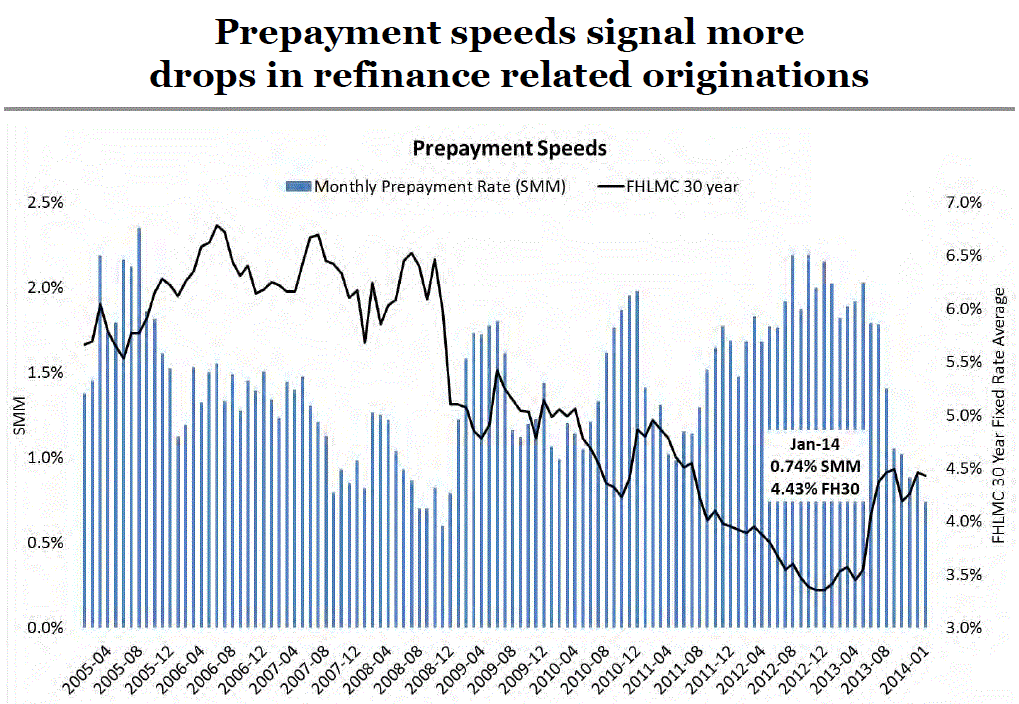 </p
</p
Blecher said that rising rates arerntaking away some of the incentive to refinance but also the majority of thosernwho could refinance and take advantage of the record low interest rates havernalready done so. This is a factor withrnboth regular refinances and those which fit the criteria for refinancingrnthrough the Home Affordable Refinance Program (HARP.) “Thernvolume of HARP refinances over the past year has driven this population down tornabout 700,000 loans in January 2014, as compared to over 2.3 million at thernsame time last year,” he said. “From a geographic perspective, outside ofrnFlorida and Nevada, we see the Midwestern states of Illinois, Michigan,rnMissouri and Ohio have among the highest percentage of HARP eligibility.” </p
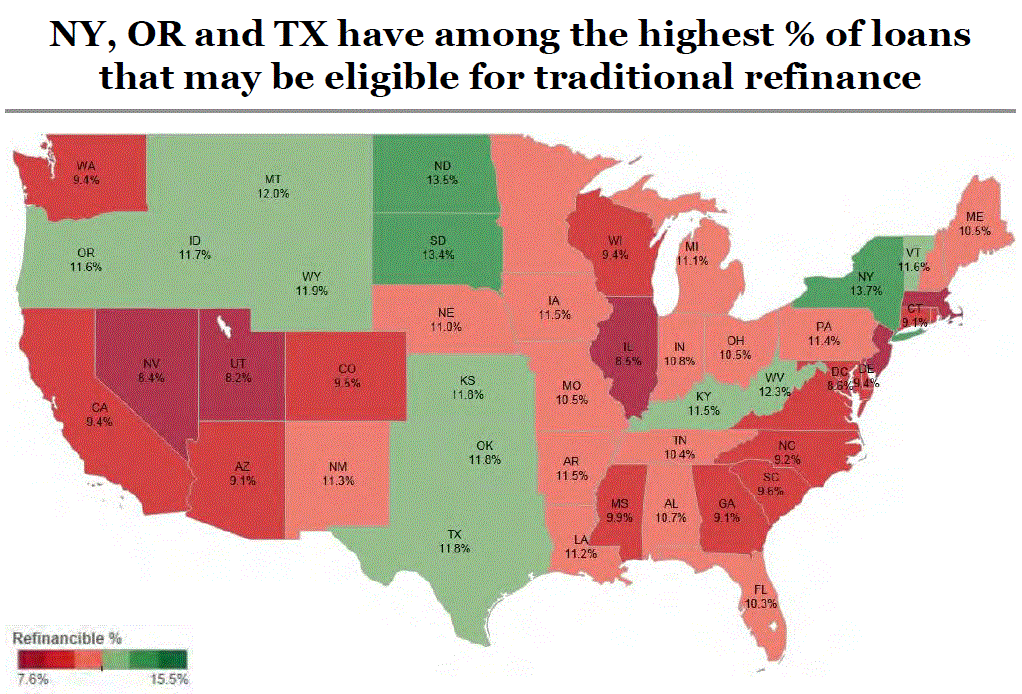 </p
</p
Black Knight estimates that arnreconfigured HARP that allowed for refinancing loans other than those owned orrnguaranteed by Fannie Mae or Freddie Mac could add significantly to thernrefinancable universe. They put thisrnfigure at 3 million eligible borrowers. </p
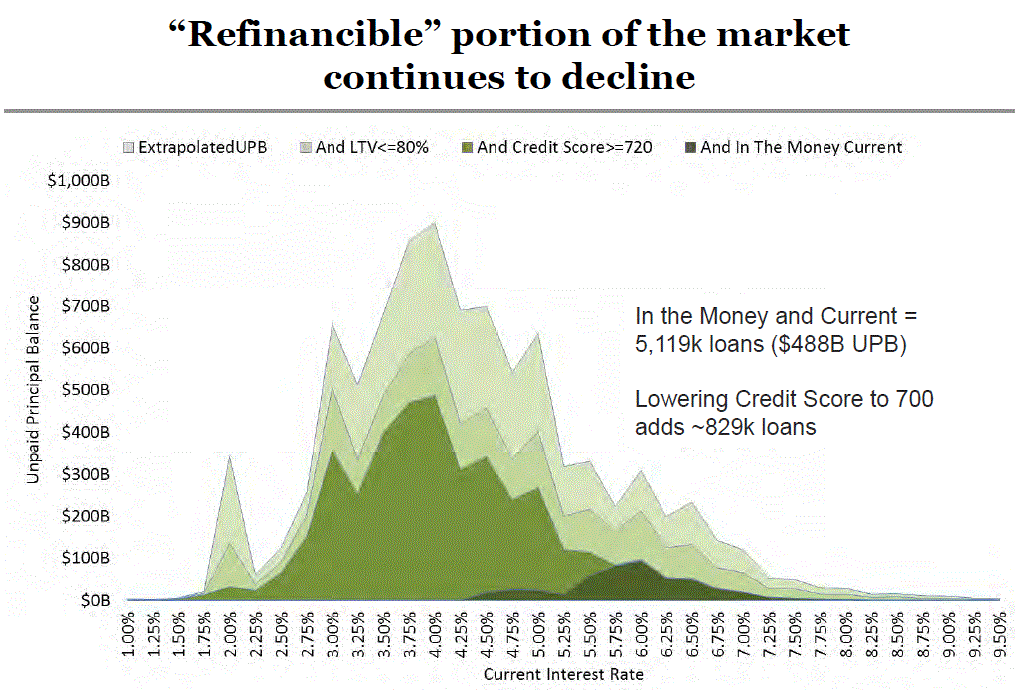 </p
</p
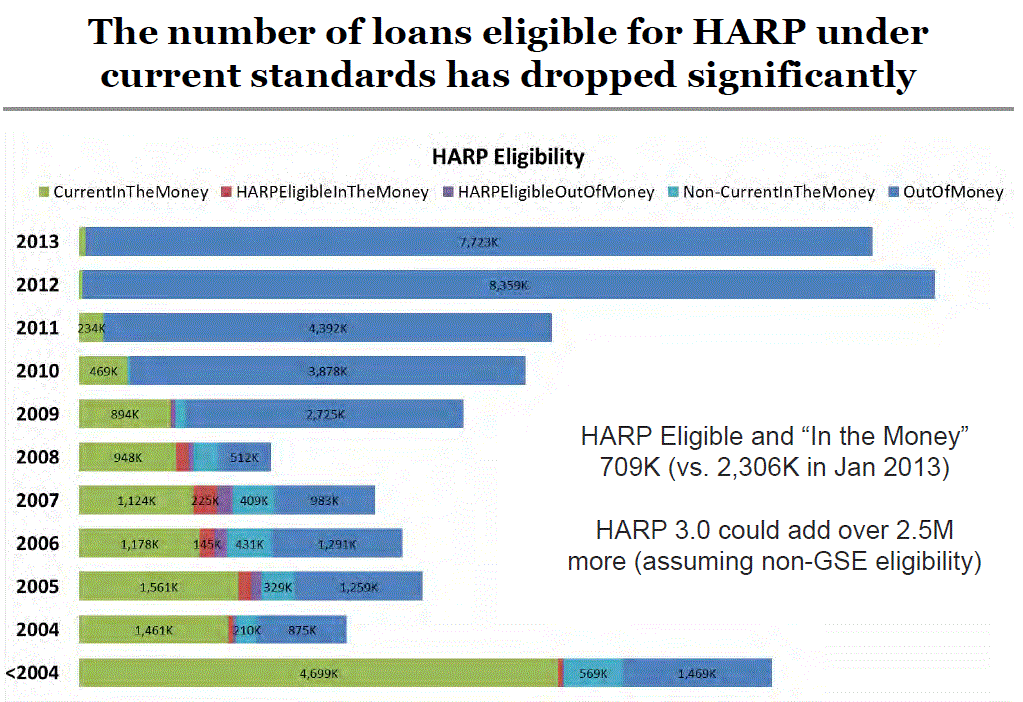 </p
</p
Despiternthe decline in originations, home sales remained relatively strong in 2013, uprn3.7 percent in December 2013 compared to December 2012 and were up 8.4 percentrnfor the entire year. These home sales,rnhowever were increasingly supported by all-cash sales which increased sharplyrnin the fourth quarter to nearly half of sales from about 25 percent during thernsame period in 2012.</p
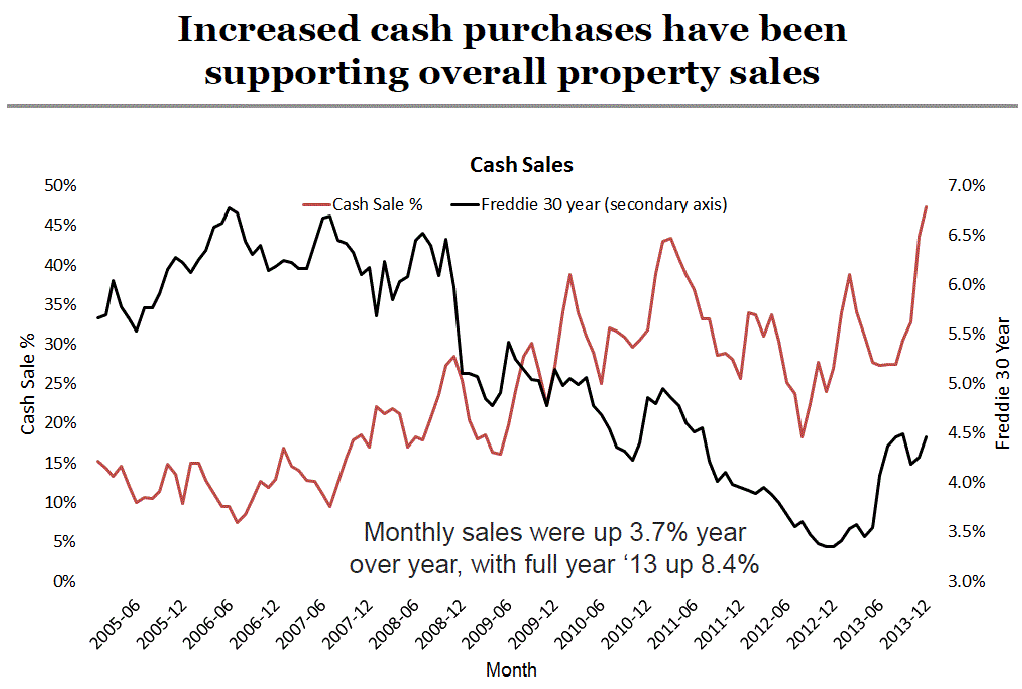 </p
</p
The home equity market,rnwhich began to shrink year-over-year in 2007 and declined by 80 percent fromrnthe prior year in both 2008 and 2009, increased slightly in 2013 compared torn2012. The increase was modest and volumes of both loans and lines of creditrnremain about 90 percent below levels in 2006 and even below origination volume inrn2010. The equity loan activity isrnconcentrated among “super prime” borrowers who have weighted average creditrnscores 20 to 40 points higher than for home equity loans originated inrn2006. </p
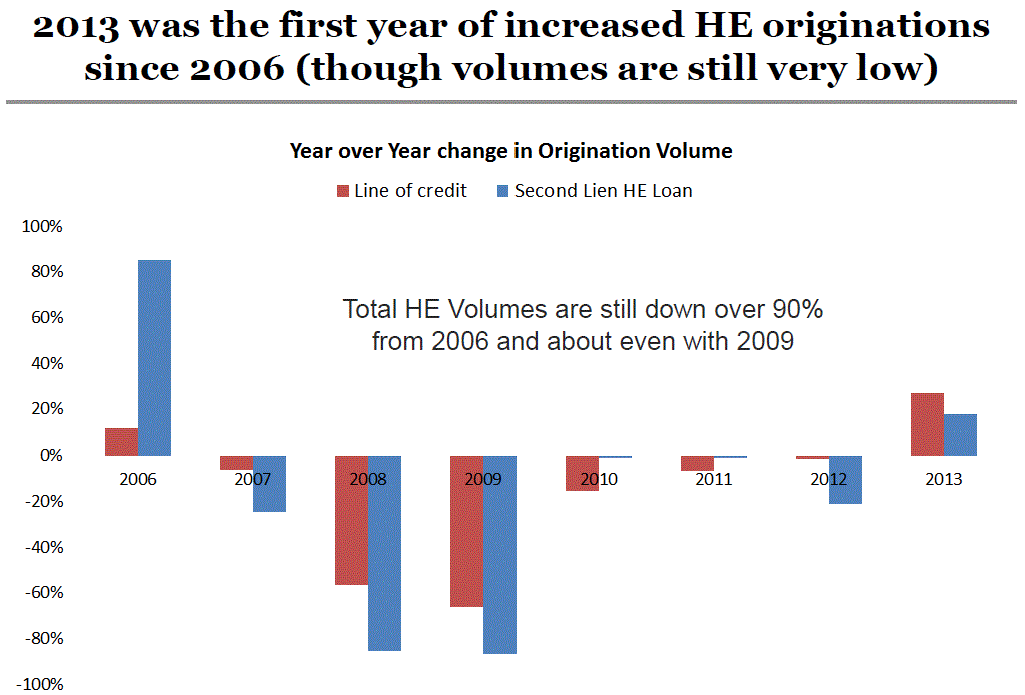 </p
</p
Loan sizes are also creeping up. First position HELOCS now average $124,000rnwhile second lien lines of credit average $95,000 and second loans $64,000.</p
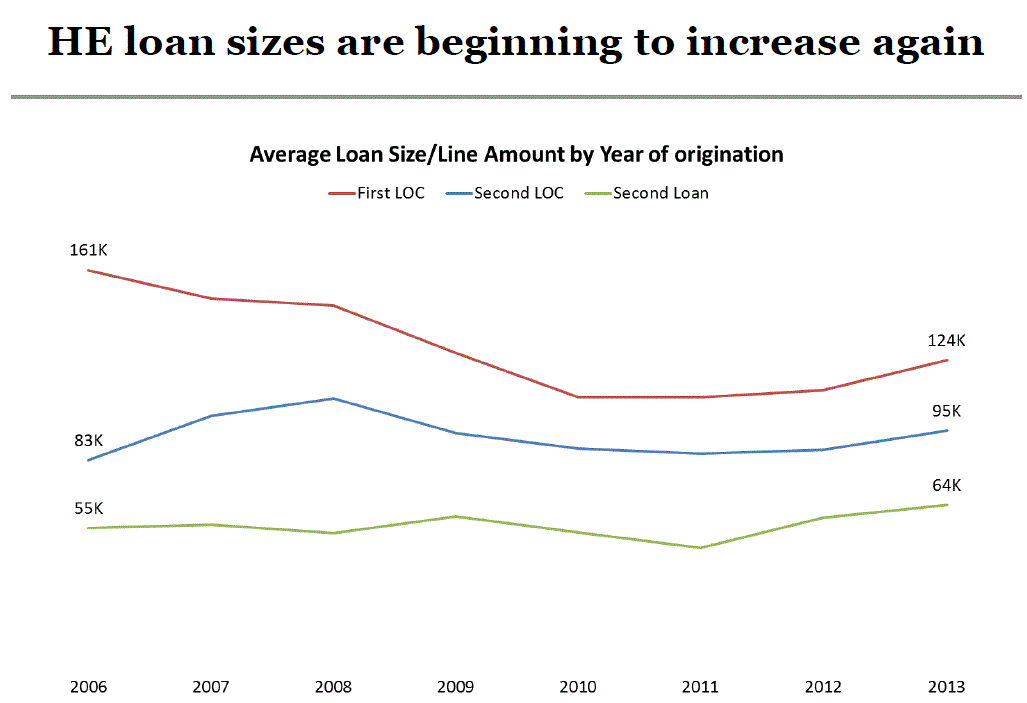 </p
</p
Black Knight says thernperformance of recent vintages of HELOCs is “pristine.” Delinquencies at six months are consistentlyrnat 0.1 percent for those loans origination in 2009 and later, compared to a 2.2rnpercent delinquency rate six months after origination for those loansrnoriginated in 2006.rn</p
Therncompany cautions that lenders should watch those earlier loans which are now inrnthe amortizing stage. New problem loansrnof this vintage are up 27 percent year-over-year as of January. </p
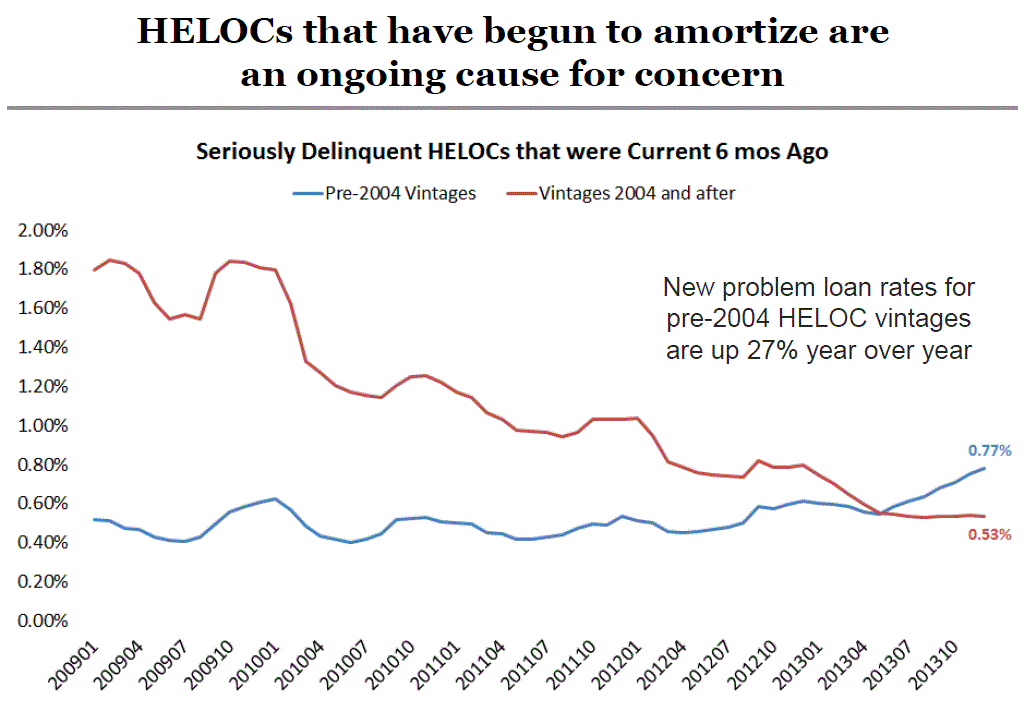
All Content Copyright © 2003 – 2009 Brown House Media, Inc. All Rights Reserved.nReproduction in any form without permission of MortgageNewsDaily.com is prohibited.
Latest Articles
By John Gittelsohn August 24, 2020, 4:00 AM PDT Some of the largest real estate investors are walking away from Read More...
Late-Stage Delinquencies are SurgingAug 21 2020, 11:59AM Like the report from Black Knight earlier today, the second quarter National Delinquency Survey from the Read More...
Published by the Federal Reserve Bank of San FranciscoIt was recently published by the Federal Reserve Bank of San Francisco, which is about as official as you can Read More...

Comments
Leave a Comment